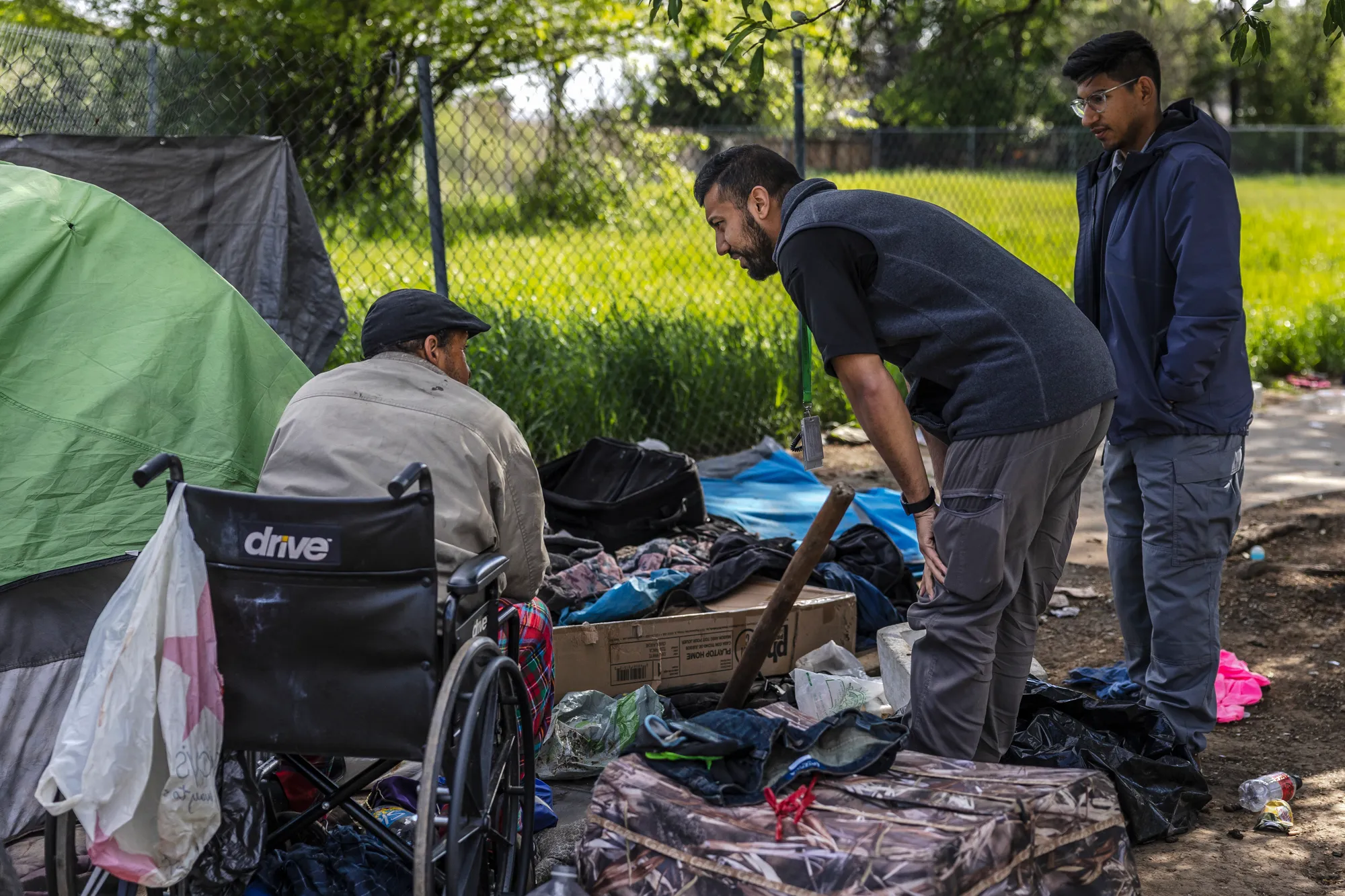The Policy Failure of Criminalizing Homelessness
Photo by Rahul Lal for CalMatters
The proposed California Senate Bill 31 would make living on streets, sidewalks, or public property 1000 feet from schools, daycare centers, parks, or libraries a misdemeanor. In New York City, the administration has begun heavily enforcing rules that prevent people from using the subway system to sleep at night. At the beginning of 2023, a Missouri law went into effect, banning people from sleeping on state-owned land, like under bridges. St. Petersburg, Florida has a combination of ordinances that prevent people from lying and sleeping on sidewalks, as well as banning the unpermitted placement of “any object that is used as the functional equivalent of a table.” All these policies aim to reduce homelessness in their respective localities and increase public health and safety. State Senator Brian Jones of California said in reference to SB31, “Kids shouldn’t be exposed to the open drug use and the dangerous situations we are seeing in homeless encampments near schools and parks across the state.” Mayor Eric Adams of New York City said that the crackdown on subway systems was about correcting the conditions of homelessness. However, policies like these fail to achieve their intended effect. Rather, the criminalization of homelessness does not improve public safety, nor does it reduce homelessness, but instead actively harms the health of the unhoused.
Some proponents of these policies argue that unhoused people cause crime, and as such, removing the unhoused from the streets will reduce crime in these areas. This is not the case. In 2020 and 2021, only 8 percent of crimes in Los Angeles involved unhoused individuals, including crimes in which they were the victims. A study published in Social Problems found that unhoused males are no more likely to commit murder, rape, robbery, or aggravated assault than the general male population. Furthermore, many charges that the unhoused are likely to face are inherent to being homeless, like loitering and trespassing. Unhoused individuals are not major contributors to crime, and thus removing them from public places does nothing to reduce crime rates. In fact, these policies may actually undermine public safety. Money and manpower spent enforcing anti-camping, anti-panhandling, and other such ordinances is money not spent investigating other, more pressing crimes.
Additionally, criminalizing homelessness can harm the health of the unhoused. A Denver survey of 484 unhoused individuals found that higher police contact was correlated with inconsistent sleep patterns and higher stress levels. The study also found that individuals who were forced to leave well-lit, populated city cores to more isolated areas experienced higher rates of physical assault, robbery, and violent threats. Another study focused on the effects of abatement — when a city clears a homeless encampment and forces people to move elsewhere. Through in-depth interviews with unhoused individuals, researchers discovered that abatements can be detrimental to the health and safety of the unhoused in a variety of ways. For example, a common practice of abatement is not to distribute property back to the unhoused but just to take it from them. This leaves individuals with less resources to be able to survive. As mentioned earlier, by sweeping encampments, cities disperse the unhoused population and push them into more isolated areas, leaving unhoused individuals with less connection to important social services and more at risk of being a victim of crime. Clearly, criminalizing homelessness does not improve the health of the unhoused, as proponents of these policies argue, but actively undermines it.
Criminalizing homelessness also does not actually reduce homelessness. Some argue that it disincentives homelessness by making it more difficult to be homeless. However, being unhoused is already quite difficult. If people had the resources and opportunity to find stable housing, they would. Making it harder to be homeless does not provide these necessary resources. Furthermore, given the ubiquity of these policies and popularity throughout the last few years, America would be experiencing a decline in homelessness if they truly worked. However, the HUD estimates of the national homeless population indicate a rise in homelessness since 2014. If a policy is not working, and has harmful effects, it should stop being implemented.
Rather than making homelessness harder, policies should focus on making it easier to get housing. One example of this is “Housing First.” Housing first policies would give the unhoused homes, no strings attached, and provide important mental health, vocational, and other such services. One widely cited example of housing first policy in action is in Houston. The city’s housing strategy included policies offering people living in encampments permanent supportive housing with no sobriety conditions and providing landlords with incentives to house the formerly unhoused. Since 2011, Houston has witnessed a 53 percent decline in homelessness. Another example of Housing First policy in action is in Finland. Since 2008, the city of Helsinki created 3,500 permanent homes to be provided to the unhoused with varying rent and drug use conditions, along with necessary social services. This is a major departure from their previous model, which required the unhoused to get their life in order before getting a house. Since the launch of this program, the amount of people experiencing long term homelessness has fallen by around 35%. While there are obviously challenges associated with this model: building new housing often requires politically unpopular zoning policy changes and is expensive, these costs would be worth it. Decreasing homelessness likely decreases the amount of money a government will need to spend on social services, offsetting some costs of building new housing. Furthermore, local governments can focus first on using existing buildings for Housing First units: many of Helsinki’s units were converted from a hotel. Despite these challenges, “Housing First” has proven to be a good example of how homelessness should be addressed — not by making being unhoused harder, but by making it easier to find housing.

